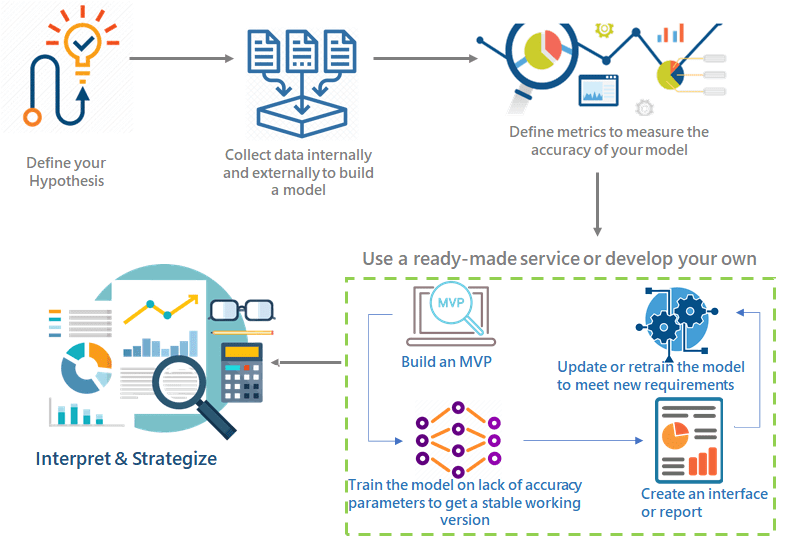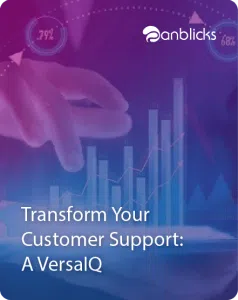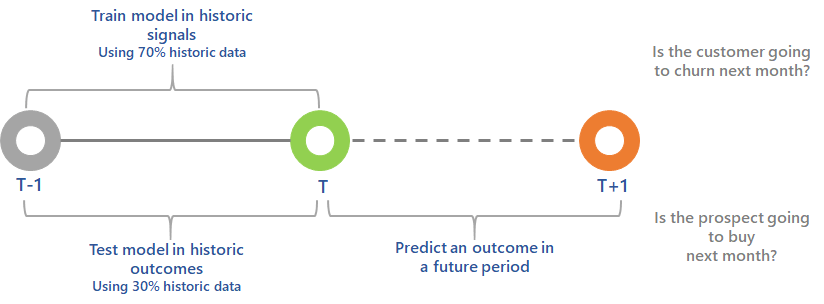
Predictive Marketing Analytics: What is it & Why is it such a buzz?

In today’s ever-changing, fast-paced marketing environment, consumer trends and behaviors are always evolving. It is critical, therefore, that the next wave of marketing technology solutions focus not on what consumers are doing, but what they will do.
In the past few years, many B2C companies have started utilizing Predictive Marketing Analytics. Predictive marketing is a technique that uses data analytics to determine which marketing strategies and actions have the highest probability of succeeding. The individual methods and formulas have been around for almost fifty years. So why the sudden popularity? The explanation is that three critical enablers have simultaneously matured to the point at which PMA has become easily accessible to all.
- Marketing Clouds and CRM-centric sales generate a massive amount of behavioral data around sales interactions, digital customer engagement, social media, loyalty, support, etc.
- Data extraction has become easier, faster and cheaper. Modern martech applications make data extraction simple and easy to automate using data integration tools.
- Computing costs have dropped. Computing power required for machine learning was previously very expensive. With cloud computing following Moore’s law, the cost of storing and processing data has reduced considerably.
Data has always been the base for marketing strategies and to measure the efficacy of these strategies. Future-looking businesses not just want to refer to the historical data but also be able to get predictions for the future. This is where predictive analytics steps in and adds value to the data that already exists. With better understanding and insights from that data through predictive analytics, come informed decisions that provide serious business value.
Today, “91% of top marketers are either fully committed to or already implementing predictive marketing” says Salesforce. The Predictive Intelligence Benchmark Report states:
On average, predictive intelligence recommendations influenced 26.34% of total orders. When analyzed over a 36-month period, we see that the total orders influenced increased from 11.47% at the beginning of predictive intelligence use to 34.71% after 36 months.
Customer intelligence is critical for marketers. The What, When and How of the customer wants help with the right messaging and the most optimal channel of delivery. AI and Machine Learning guided predictive techniques help assess future customer behaviors by identifying patterns and similarities between variables in the data. Several predictive models are used depending on the use case. For instance, regression analysis identifies correlations between customers’ past purchasing behaviors to determine the probability of future purchases. Predictive models can also identify customer readiness to buy. Running customer data through predictive models can help you better anticipate behavior to better inform marketing strategy.
Identifying the correct predictive analytics model is the most important step to getting the most value out of a predictive analytics solution. For example, consider a retailer looking to reduce customer churn. They might not be served by the same predictive analytics models used by a hospital predicting the volume of patients admitted to the emergency room in the next ten days.
The most popular metrics within the purview of predictive analytics include (but not limited to) i) Client outflow ratio (churn rate), ii) Sales plan forecast, & iii) Customer lifetime value. Please note, there are however, no truly definitive answers in predictive analytics. Conceptually, modeling is about making the most of what is available and not about creating flawless datasets.
The predictive models fill in the big gaps through data mining to get a cohesive, digestible, and actionable outlook regarding buyer behavior. These can be used to model your best customer behavior and suggest which actions to take for a personalized outcome. Some applicable modeling techniques include customer segmentation, customer lifetime value models (CLTV), product affinity models, response models, churn prevention models, etc.
Introducing predictive analytics is impossible without the cooperation of the marketing and analytics departments, understanding the objectives of the study and established order in the data. Performing predictive analytics goes as follows

Marketers using predictive analytics
- Increase in revenue and marketing ROI. marketers turn past shopping trends into future buying experiences with personalized messages and content specifically tailored to their buying preferences of customers for better response
- Brand loyalty and customer stickiness. Marketers can create hyper-personalized experiences that lead to customer satisfaction and in turn create brand loyal customers.
- Omnichannel Buying experience. Consistent holistic experiences created using various aspects of web, mobile, e-mail etc., engage the customers like never before.
- Positive customer experience with data collected at various points through the customer journey. Marketers can use the huge amount of data and insights available to influence further marketing strategies.
Successfully implementing predictive analytics for marketing can lead to
- Personalized recommendations based on a consumer’s preferences.
- Enhanced online experiences that are constantly upgrading.
- Maximized conversions via optimized Real-time email campaigns
Accurate and timely business intelligence will be a differentiator going forward. While there are many reasons for using predictive analytics, the most persuasive is also the simplest: go beyond learning what happened and why to discovering insights about the future, and you will better serve your customers today.

Anblicks is a Data and AI company, specializing in data modernization and transformation, that helps organizations across industries make decisions better, faster, and at scale.









